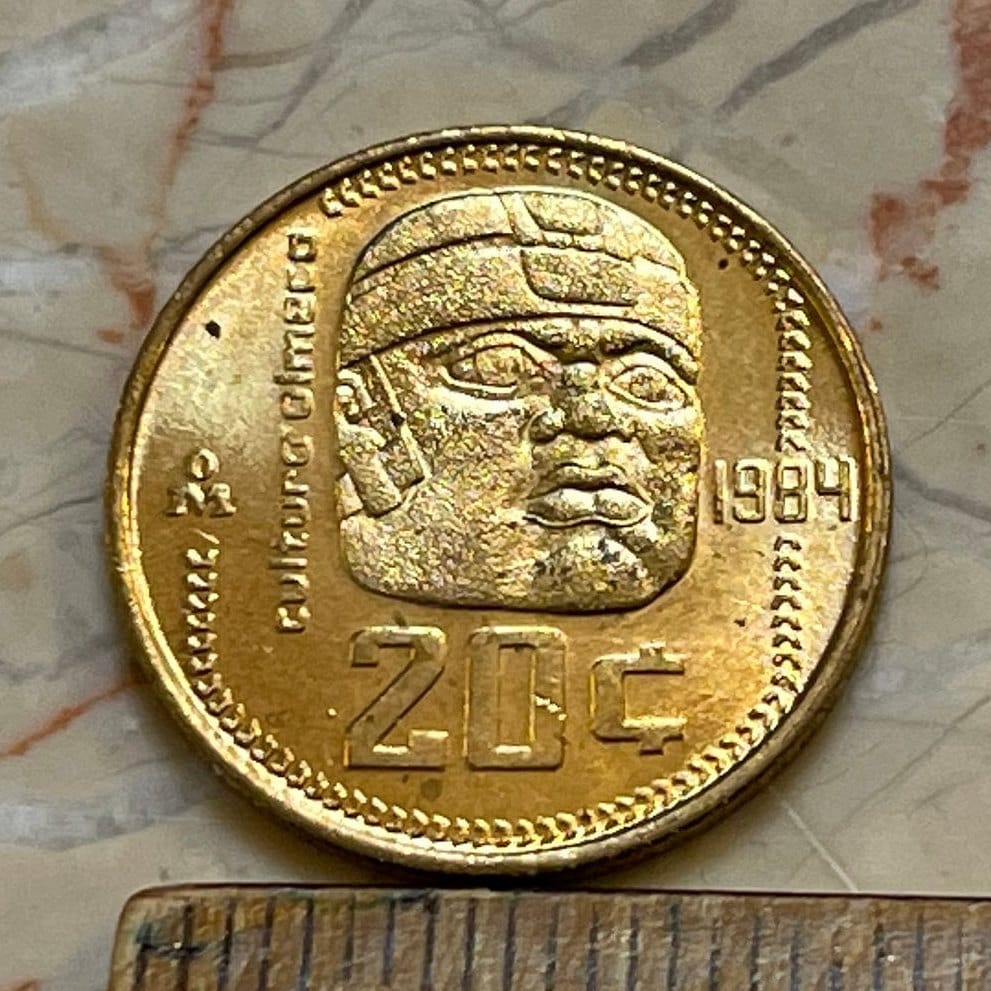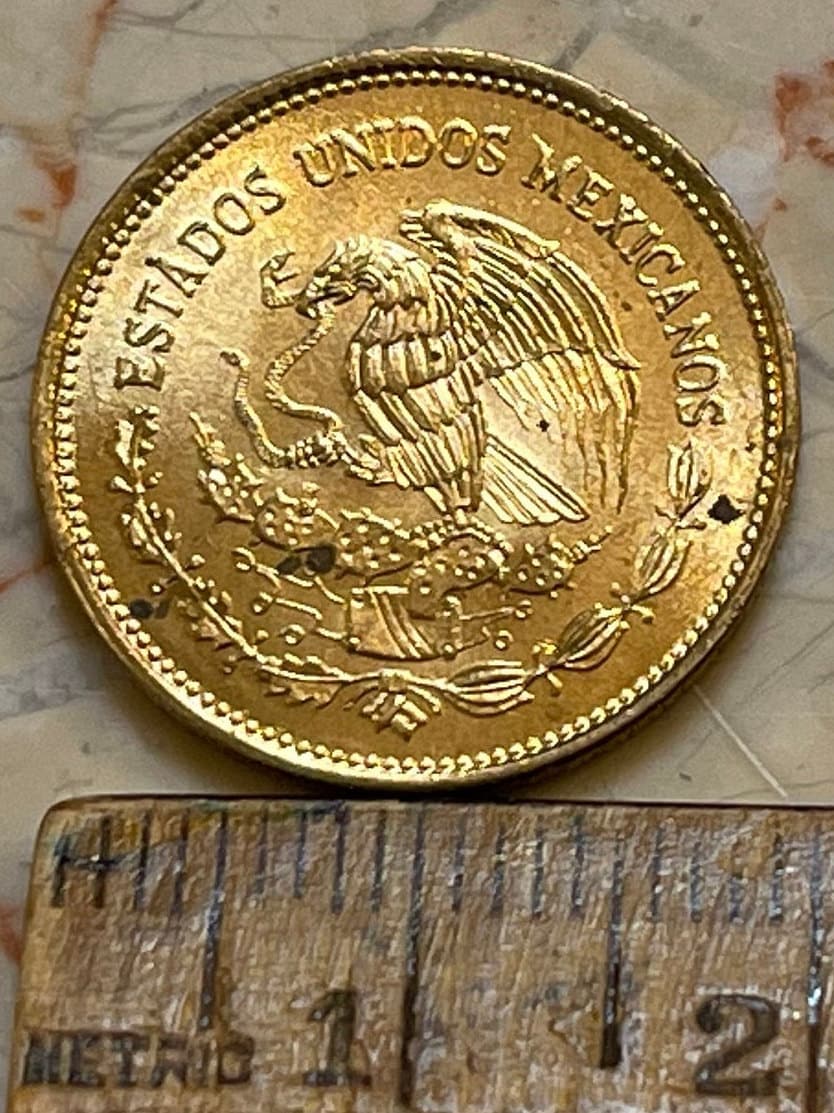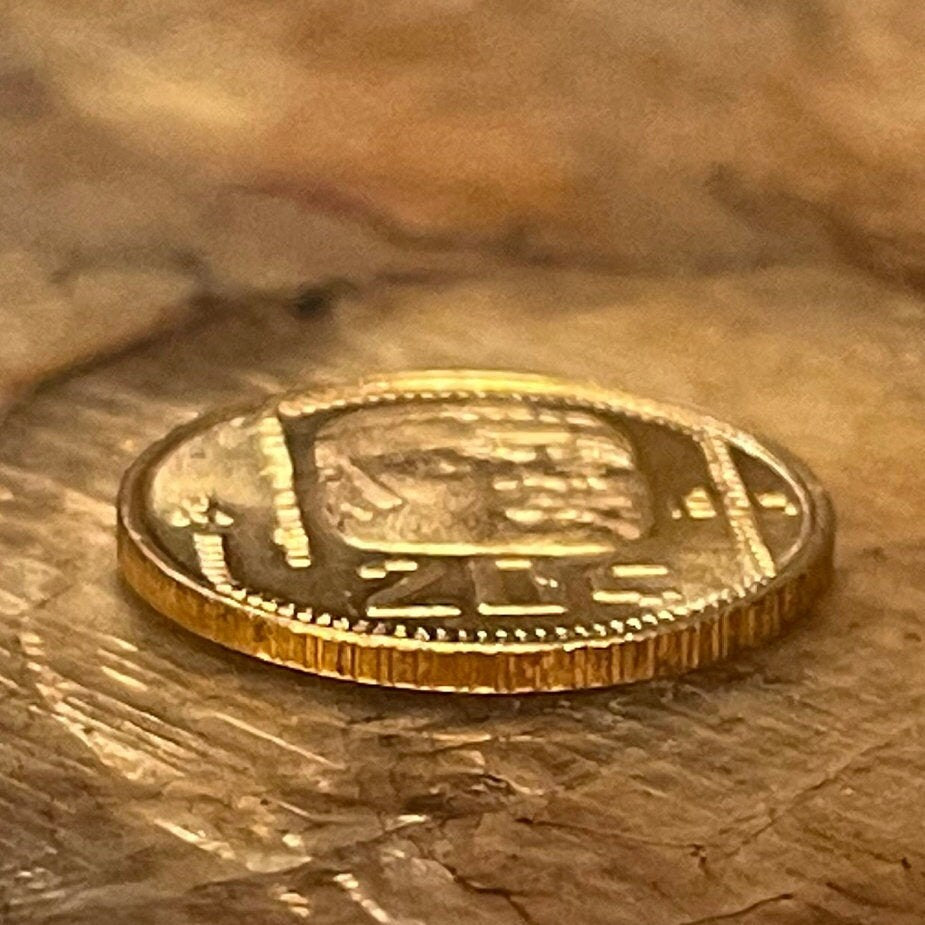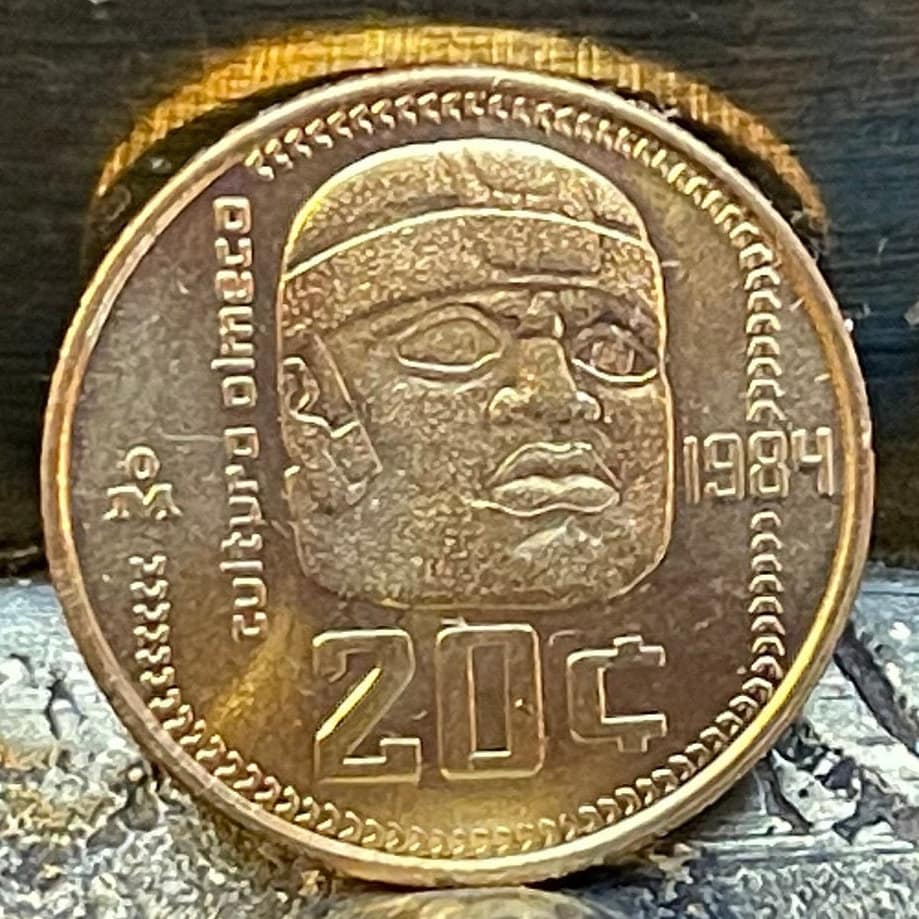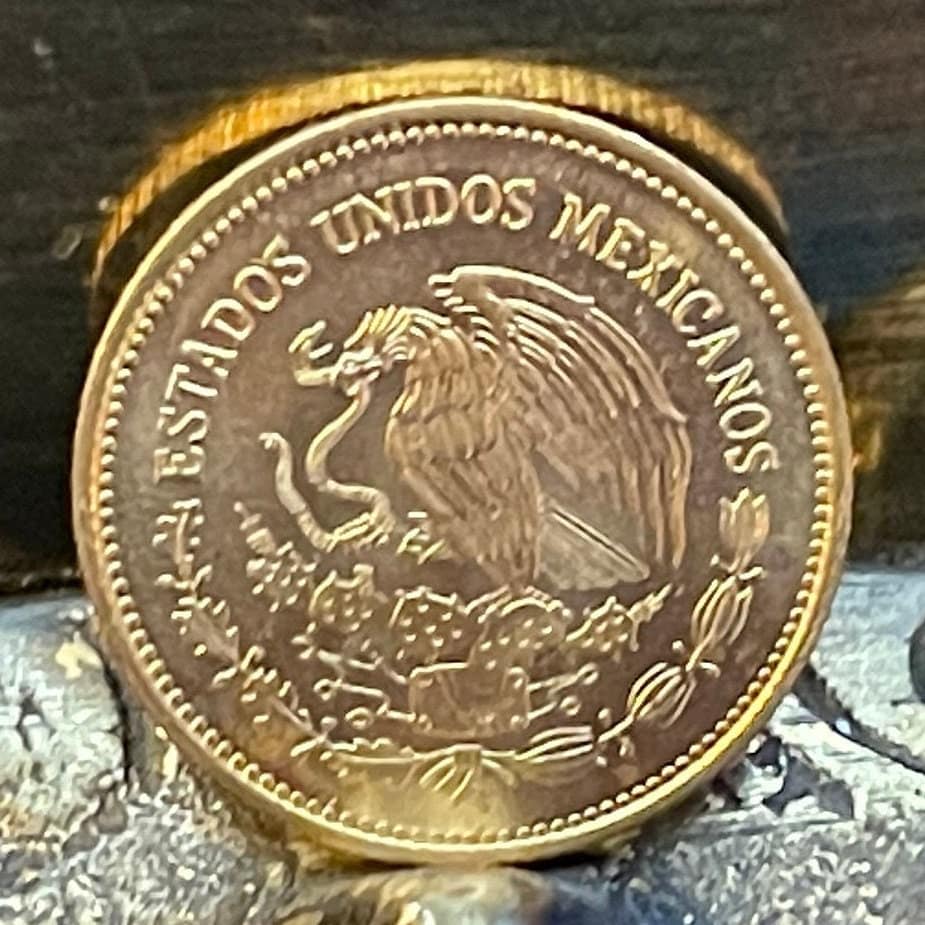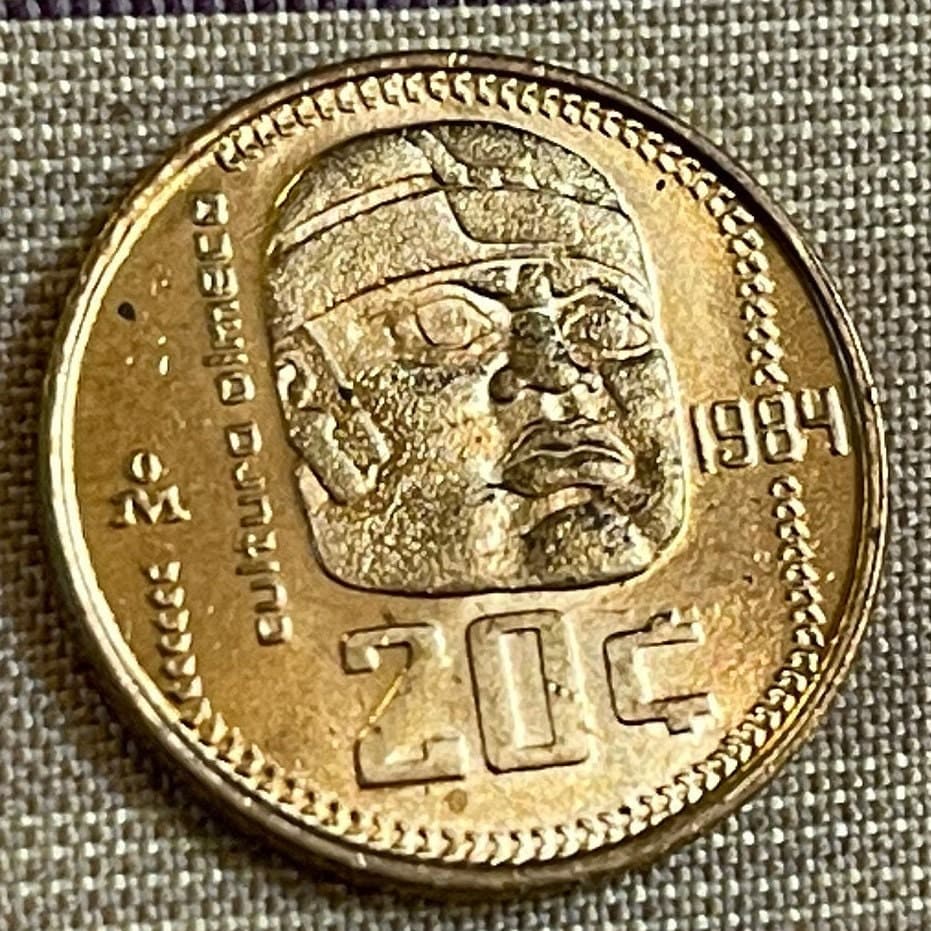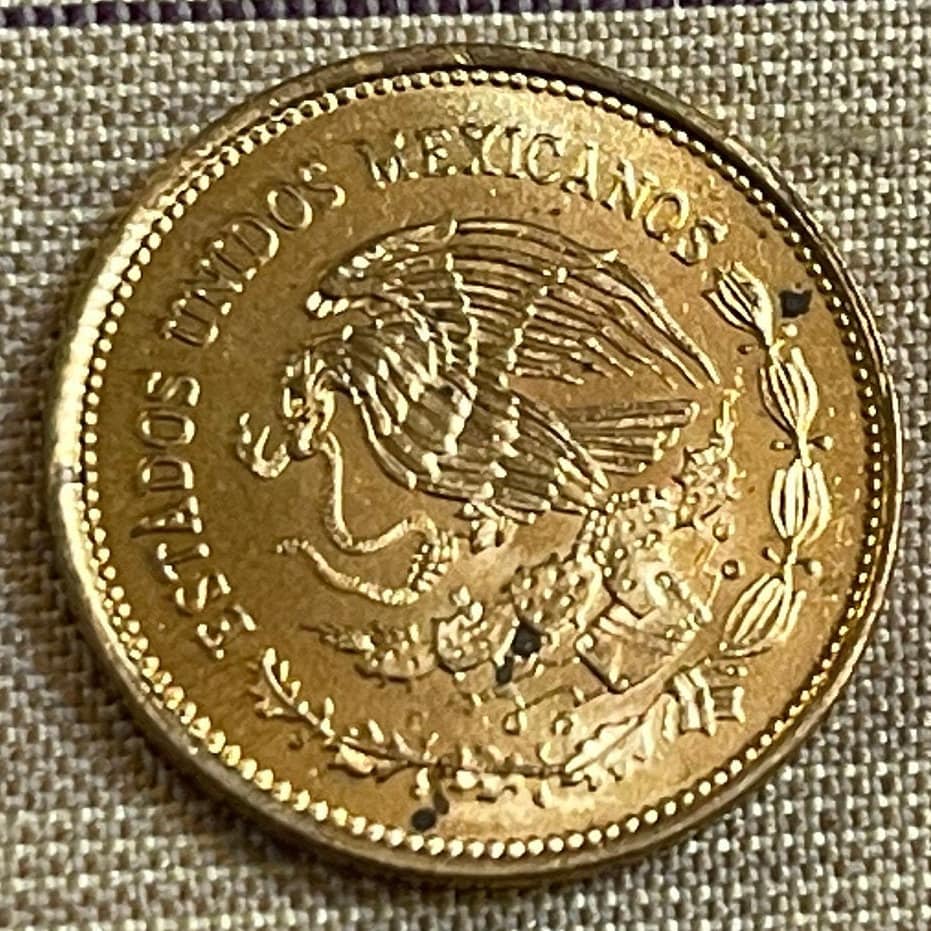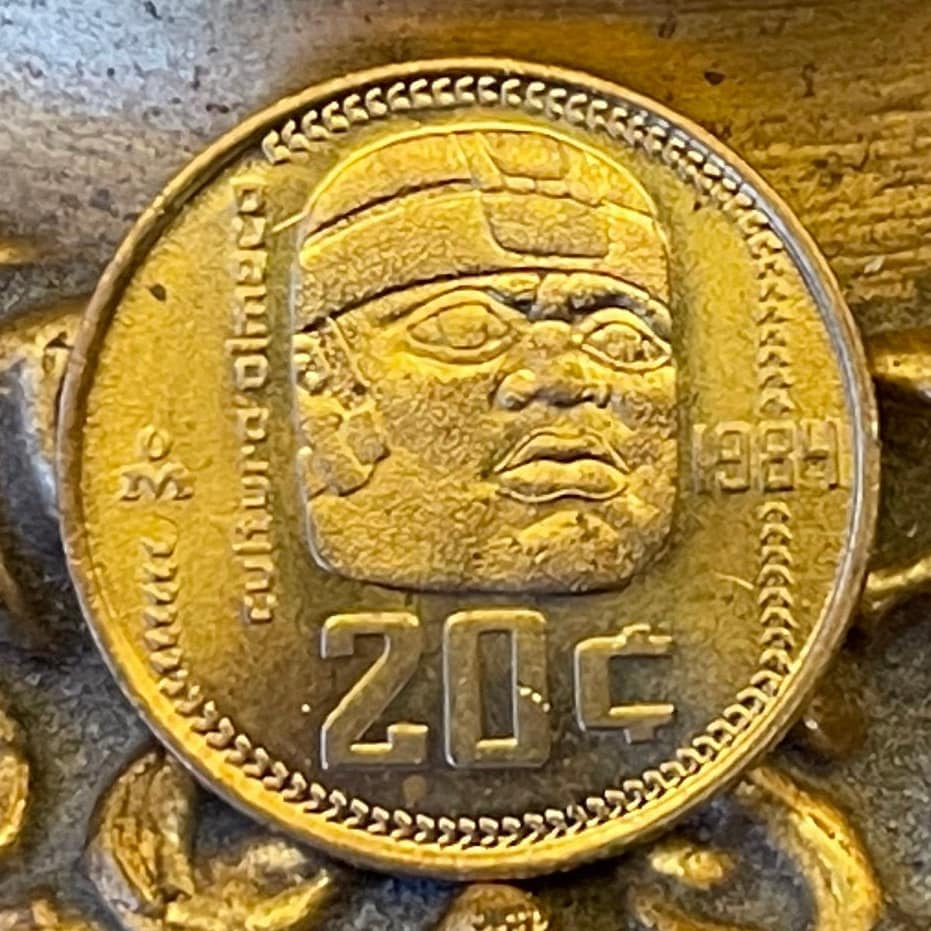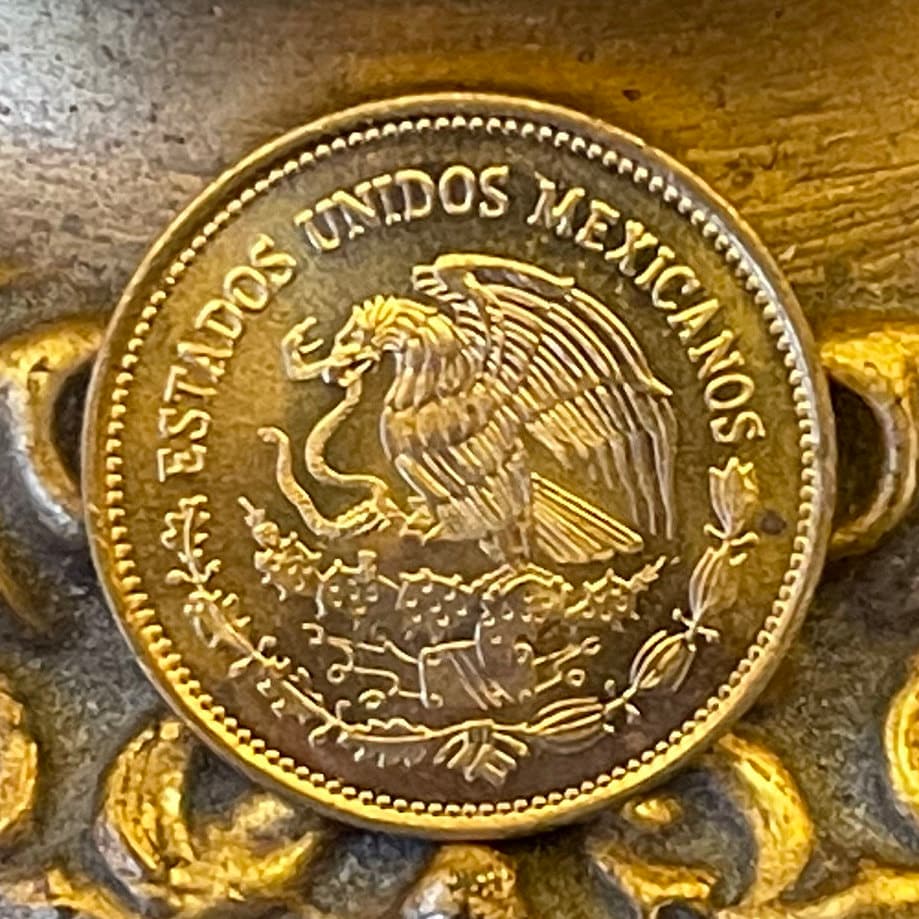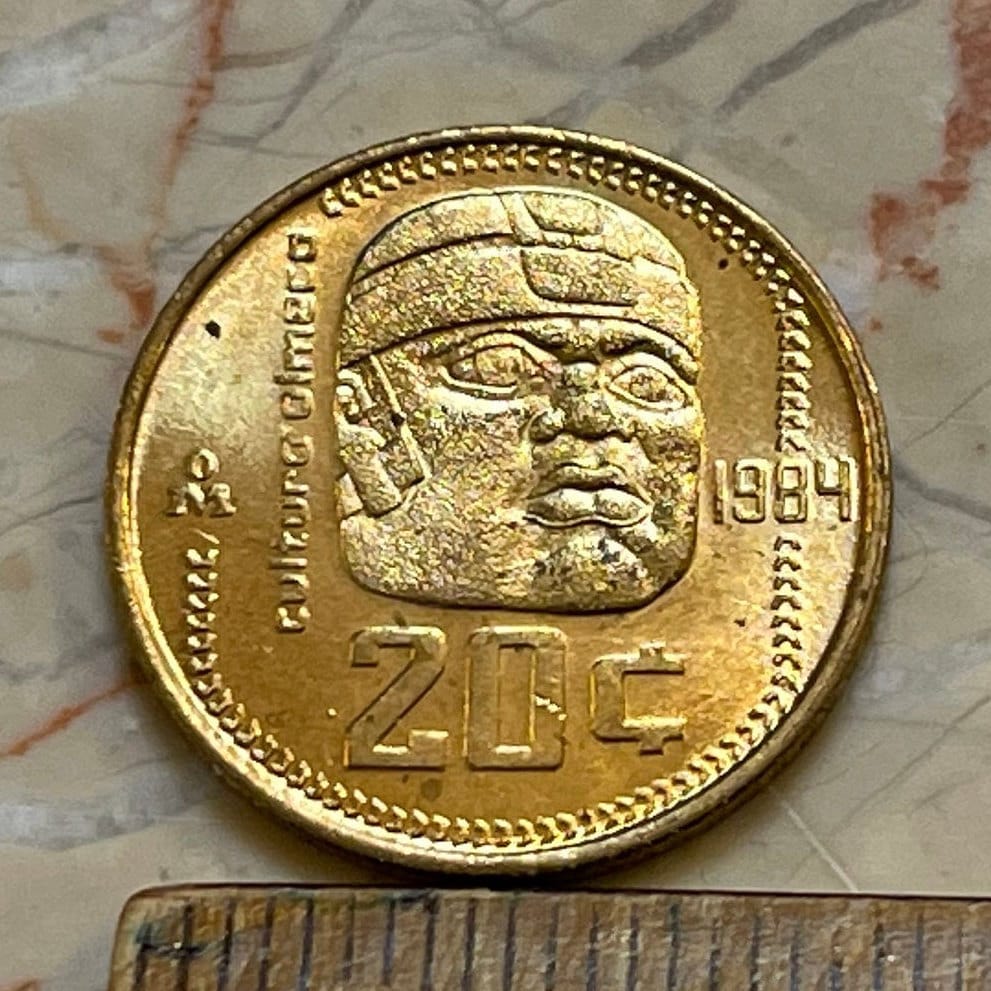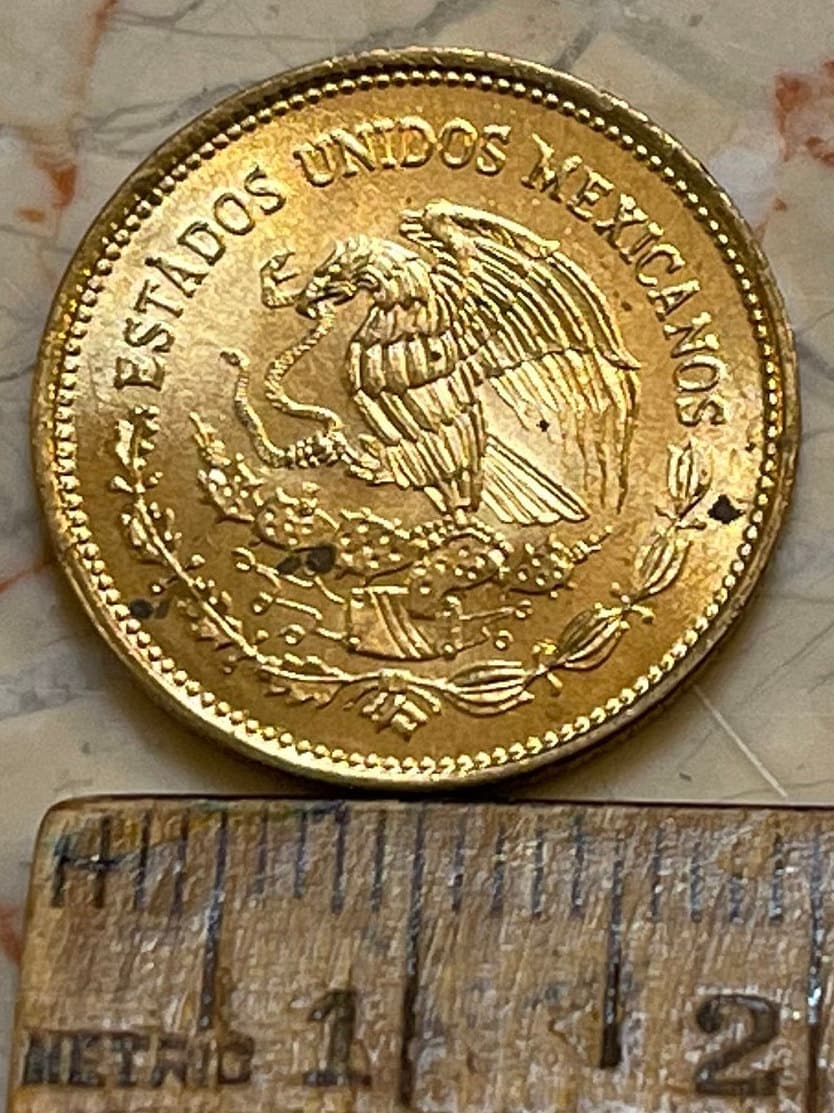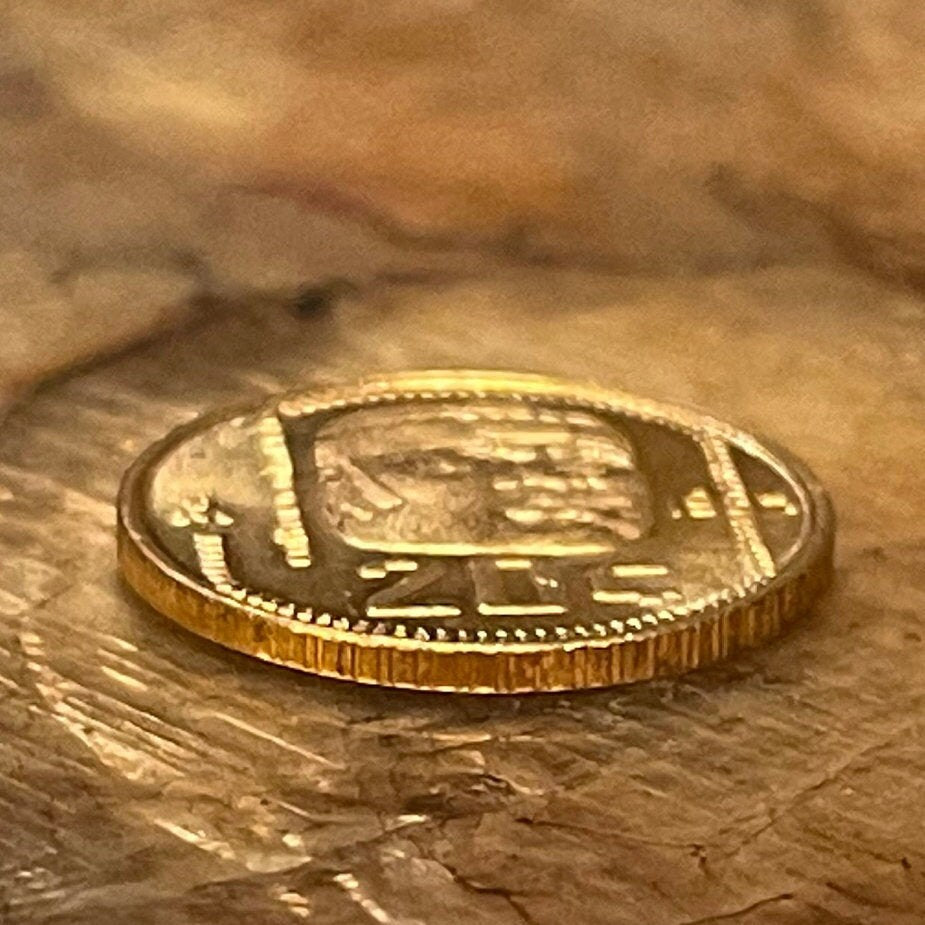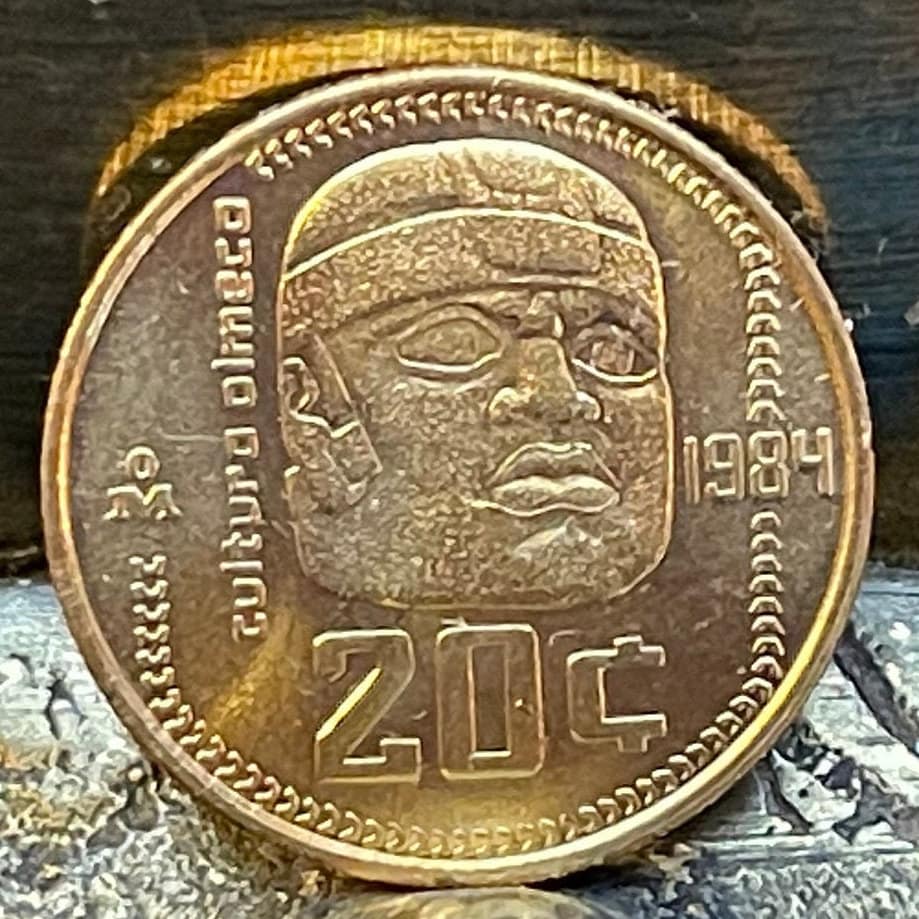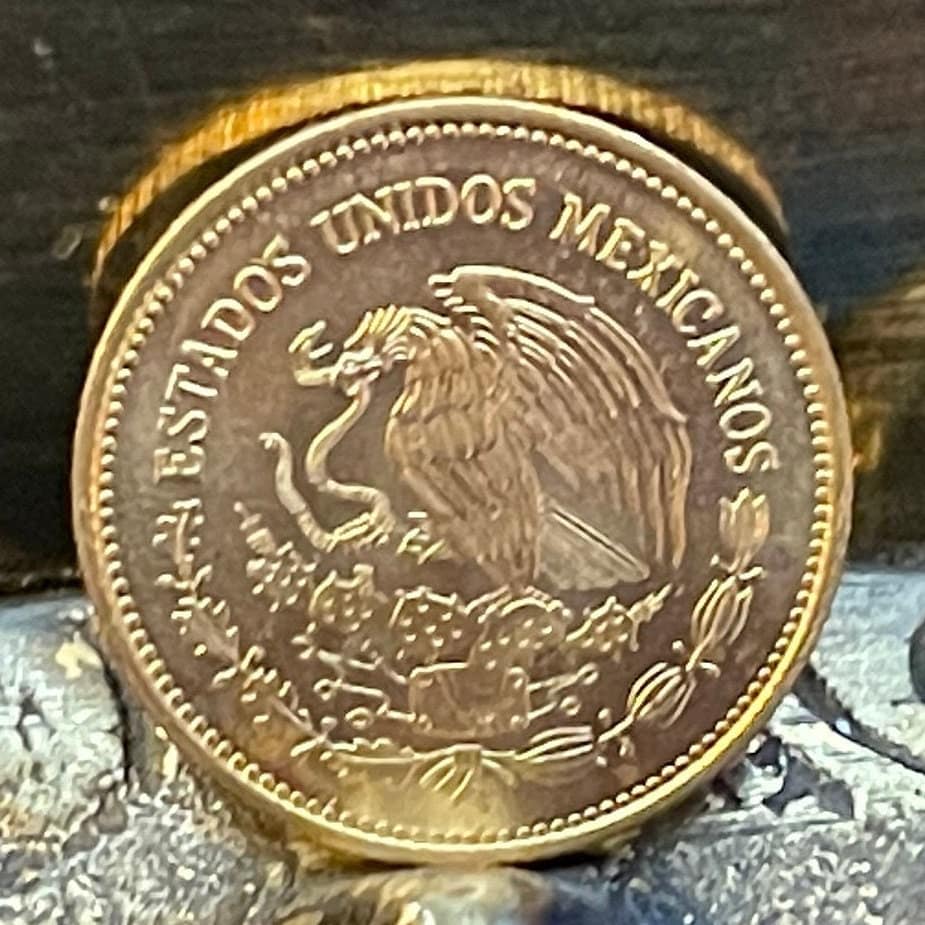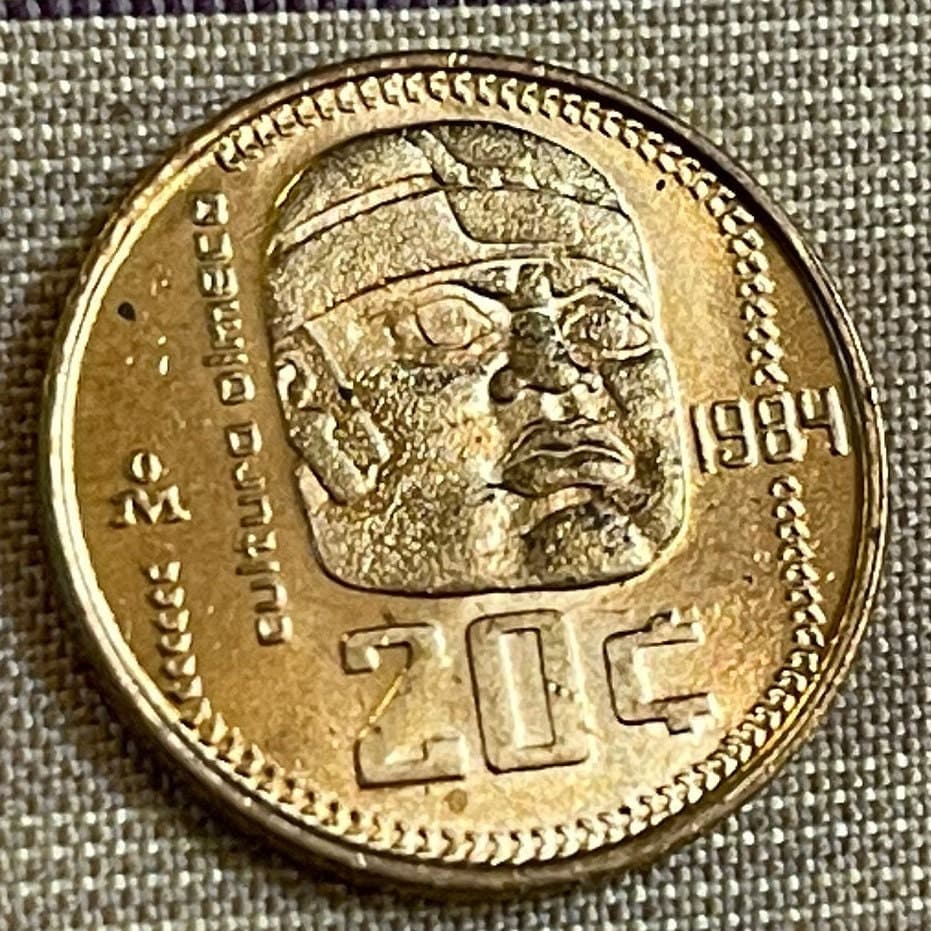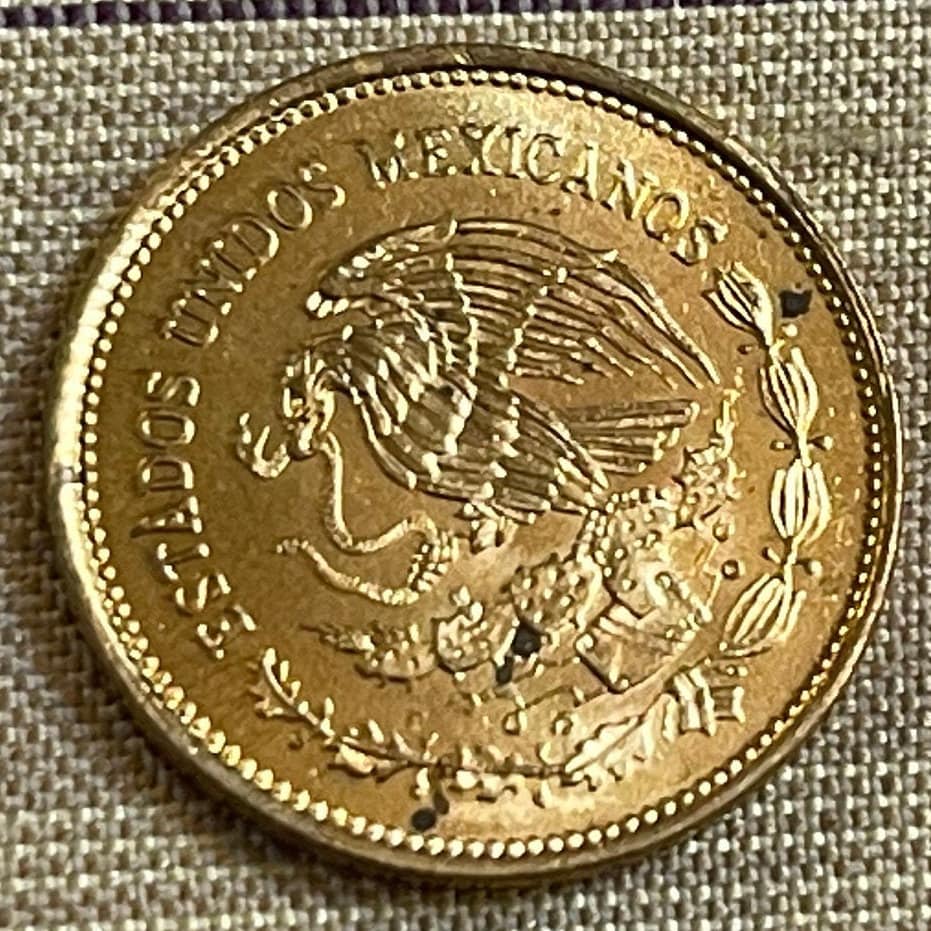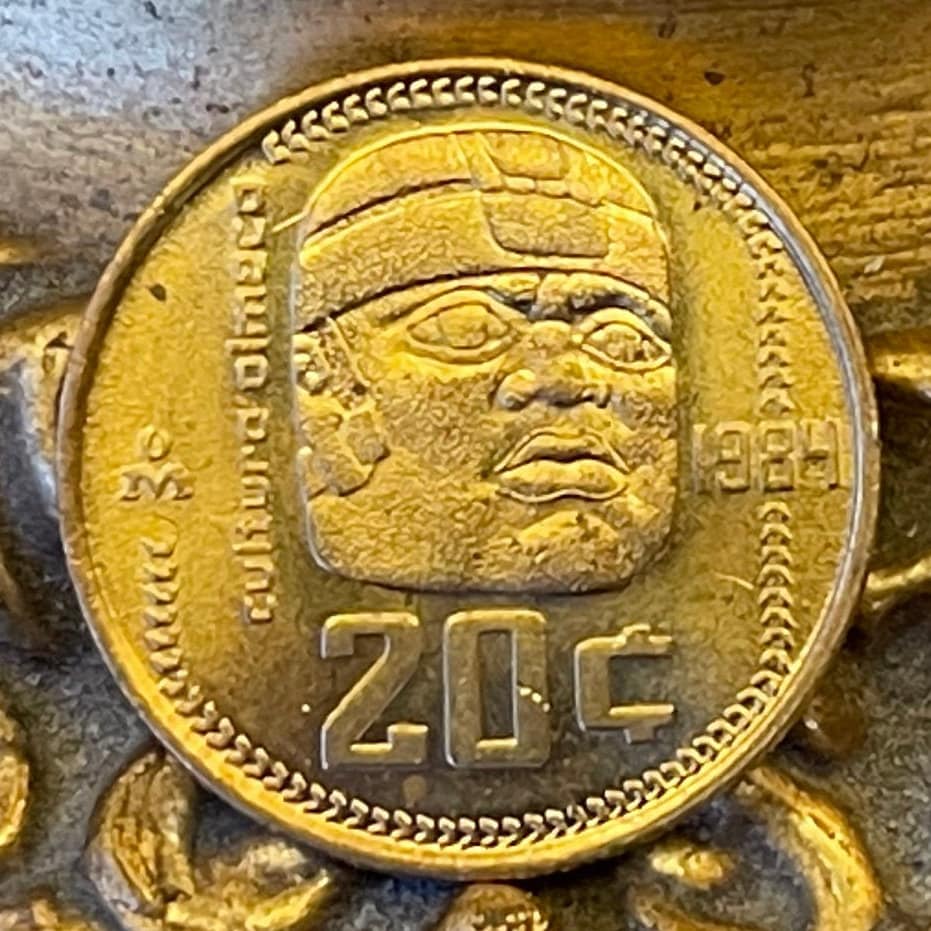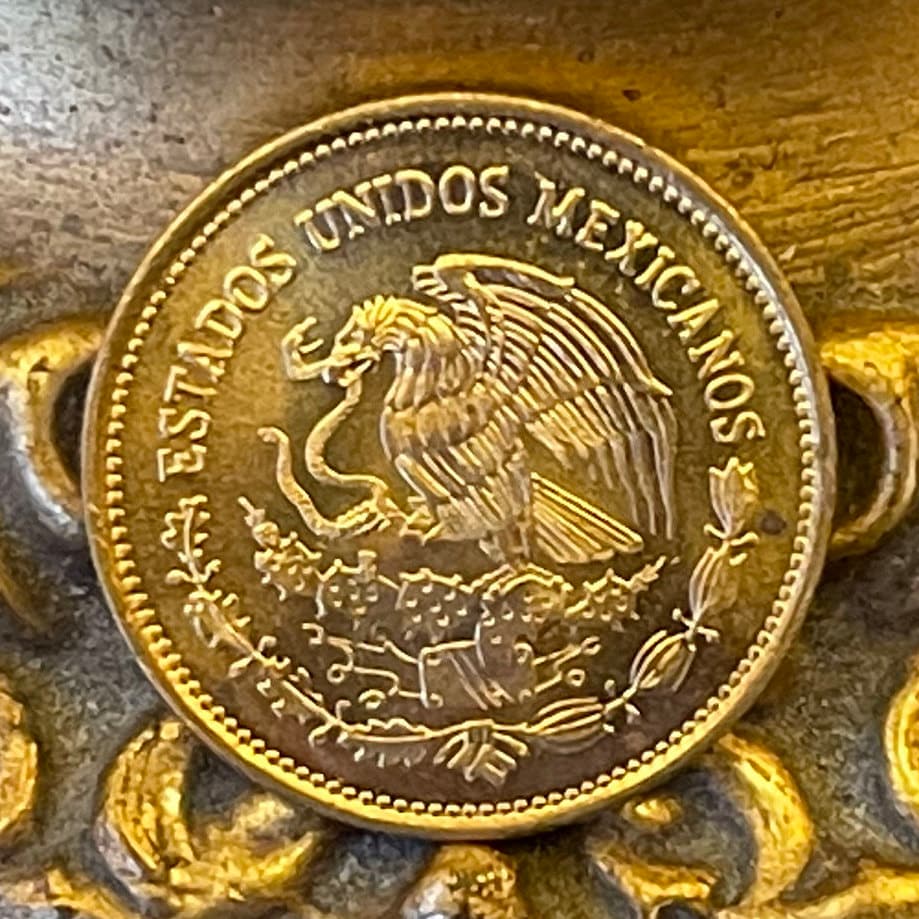elemintalshop
Olmec Colossal Head & Eagle with Snake 20 Centavos Mexico Authentic Coin Money for Jewelry and Craft Making (20 Millimeters)
Couldn't load pickup availability
Olmec Colossal Head & Eagle w/Snake 20 Centavos Mexico Authentic Coin Charm for Jewelry and Craft Making (20 Millimeters)
Obverse: National arms - eagle left, with snake and cactus
Lettering: ESTADOS UNIDOS MEXICANOS
Translation: United Mexican States
Reverse: Olmec colossal head statue 3/4 right with value below, date right
Lettering: cultura olmeca
1984
20 ¢
Translation: Olmec Culture
20 Centavos
Features
Issuer Mexico
Period United Mexican States (1905-date)
Type Standard circulation coin
Years 1983-1984
Value 20 Centavos (0.20 MXP)
Currency Peso (1863-1992)
Composition Bronze
Weight 3 g
Diameter 20 mm
Thickness 1.1 mm
Shape Round
Orientation Coin alignment ↑↓
Demonetized 15 November 1995
Number N# 1040
References KM# 491, Schön# 75
Wikipedia:
The Olmec colossal heads are stone representations of human heads sculpted from large basalt boulders. They range in height from 1.17 to 3.4 metres (3.8 to 11.2 ft). The heads date from at least 900 BC and are a distinctive feature of the Olmec civilization of ancient Mesoamerica. All portray mature individuals with fleshy cheeks, flat noses, and slightly crossed eyes; their physical characteristics correspond to a type that is still common among the inhabitants of Tabasco and Veracruz. The backs of the monuments often are flat. The boulders were brought from the Sierra de Los Tuxtlas mountains of Veracruz. Given that the extremely large slabs of stone used in their production were transported over large distances (over 150 kilometres (93 mi)), requiring a great deal of human effort and resources, it is thought that the monuments represent portraits of powerful individual Olmec rulers. Each of the known examples has a distinctive headdress. The heads were variously arranged in lines or groups at major Olmec centres, but the method and logistics used to transport the stone to these sites remain unclear. They all display distinctive headgear and one theory is that these were worn as protective helmets, maybe worn for war or to take part in a ceremonial Mesoamerican ballgame.
The discovery of the first colossal head at Tres Zapotes in 1862 by José María Melgar y Serrano was not well documented nor reported outside of Mexico. The excavation of the same colossal head by Matthew Stirling in 1938 spurred the first archaeological investigations of Olmec culture. Seventeen confirmed examples are known from four sites within the Olmec heartland on the Gulf Coast of Mexico. Most colossal heads were sculpted from spherical boulders but two from San Lorenzo Tenochtitlán were re-carved from massive stone thrones. An additional monument, at Takalik Abaj in Guatemala, is a throne that may have been carved from a colossal head. This is the only known example from outside the Olmec heartland.
Dating the monuments remains difficult because of the movement of many from their original contexts prior to archaeological investigation. Most have been dated to the Early Preclassic period (1500–1000 BC) with some to the Middle Preclassic (1000–400 BC) period. The smallest weigh 6 tons, while the largest is variously estimated to weigh 40 to 50 tons, although it was abandoned and left uncompleted close to the source of its stone.
The Olmec civilization developed in the lowlands of southeastern Mexico between 1500 and 400 BC.[3] The Olmec heartland lies on the Gulf Coast of Mexico within the states of Veracruz and Tabasco, an area measuring approximately 275 kilometres (171 mi) east to west and extending about 100 kilometres (62 mi) inland from the coast. The Olmecs are regarded as the first civilization to develop in Mesoamerica and the Olmec heartland is one of six cradles of civilization worldwide, the others being the Norte Chico culture of South America, the Erlitou culture of China's Yellow River, the Indus Valley Civilization of the Indian subcontinent, the civilization of ancient Egypt in Africa, and the Sumerian civilization of ancient Iraq. Of these, only the Olmec civilization developed in a lowland tropical forest setting.
The Olmecs were the first inhabitants of the Americas to construct monumental architecture and to settle in towns and cities. They were also the first people in the Americas to develop a sophisticated style of stone sculpture. In the first decade of the 21st century evidence emerged of Olmec writing, with the earliest examples of Olmec hieroglyphs dating to around 650 BC. Examples of script have been found on roller stamps and stone artefacts; the texts are short and have been partially deciphered based on their similarity to other Mesoamerican scripts. The evidence of complex society developing in the Olmec heartland has led to the Olmecs being regarded as the "Mother Culture" of Mesoamerica, although this concept remains controversial.
Some of the Olmecs' rulers seem to have served religious functions. The city of San Lorenzo was succeeded as the main centre of the civilization by La Venta in about 900 BC, with Tres Zapotes and Laguna de los Cerros possibly sharing the role; other urban centres were much less significant. The nature and degree of the control exercised by the centres over a widespread rural population remains unclear. Very fine Olmec art, much clearly made for an elite, survives in several forms, notably Olmec figurines, and larger sculptures such as The Wrestler. The figurines have been recovered in large numbers and are mostly in pottery; these were presumably widely available to the population. Together with these, of particular relevance to the colossal heads are the "Olmec-style masks" in stone, so called because none have yet been excavated in circumstances that allow the proper archaeological identification of an Olmec context. These evocative stone face masks present both similarities and differences to the colossal heads. Two thirds of Olmec monumental sculpture represents the human form, and the colossal heads fall within this major theme of Olmec art.
********
Wikipedia:
The coat of arms of Mexico (Spanish: Escudo Nacional de México, literally "national shield of Mexico") depicts a Mexican (golden) eagle perched on a prickly pear cactus devouring a rattlesnake. The design is rooted in the legend that the Aztec people would know where to build their city once they saw an eagle eating a snake on top of a lake. The image has been an important symbol of Mexican politics and culture for centuries. To the people of Tenochtitlan, this symbol had strong religious connotations, and to the Europeans, it came to symbolize the triumph of good over evil (with the snake sometimes representative of the serpent in the Garden of Eden).
The Law on the National Arms, Flag, and Anthem regulates the design and use of the arms. They feature in the centre of the flag of Mexico, are engraved on the obverse of Mexican peso coins, and are the basis of the Seal of the United Mexican States, the seal used on any official documents issued by the federal, state or municipal governmental authorities. The seal differs from the arms by the addition of the words Estados Unidos Mexicanos ("United Mexican States", the full official name of the country) in a semicircle around the upper half.
Share
